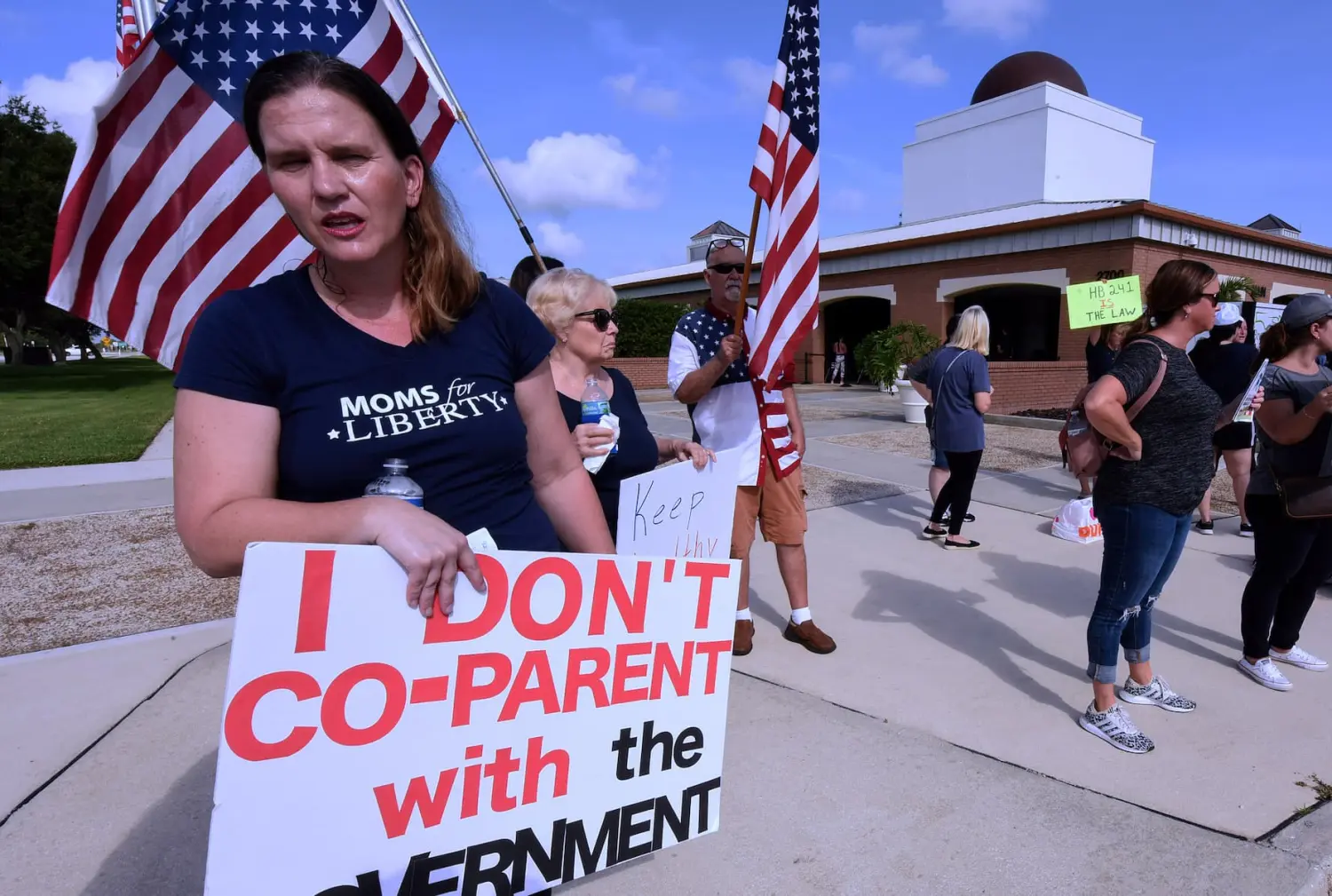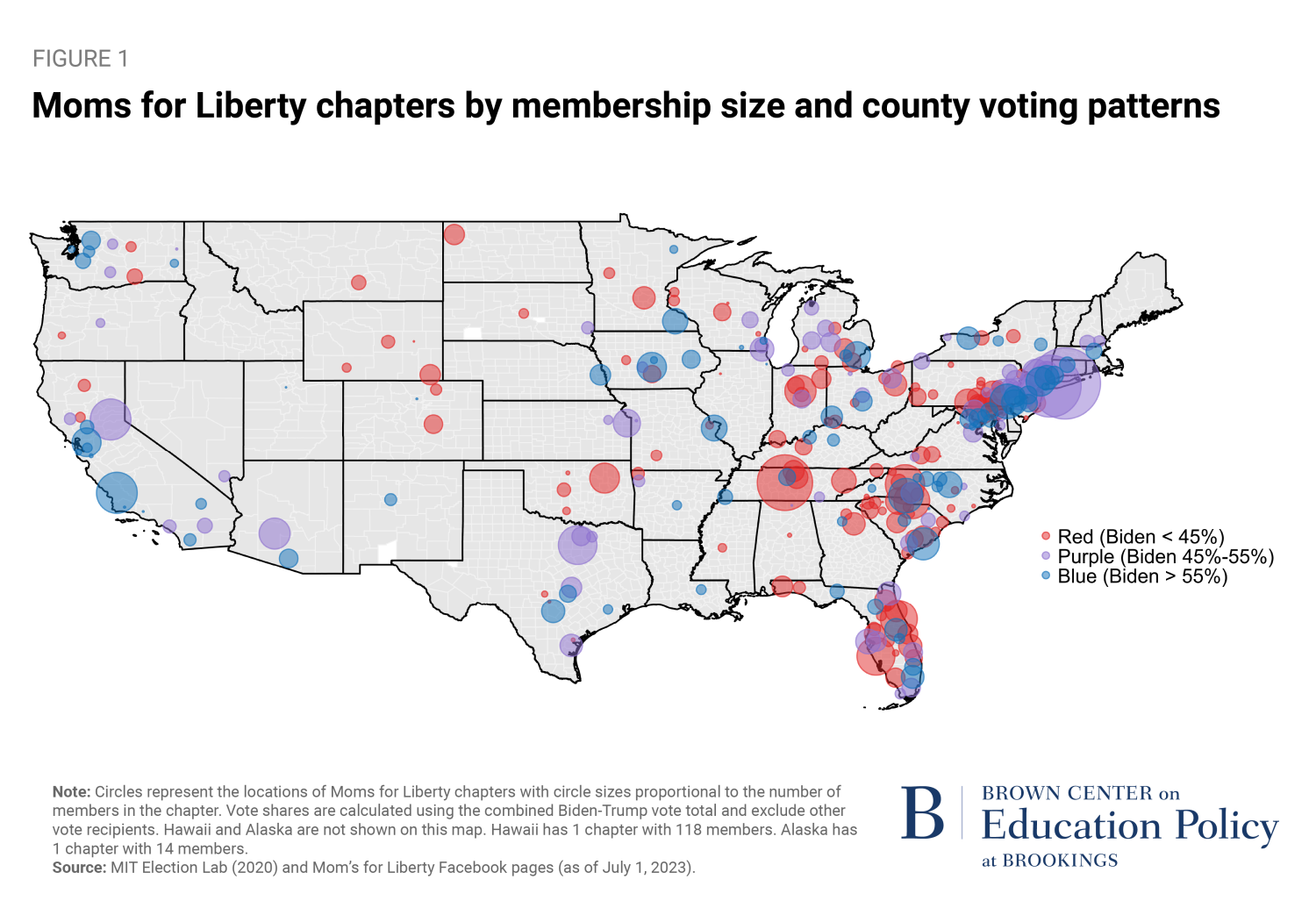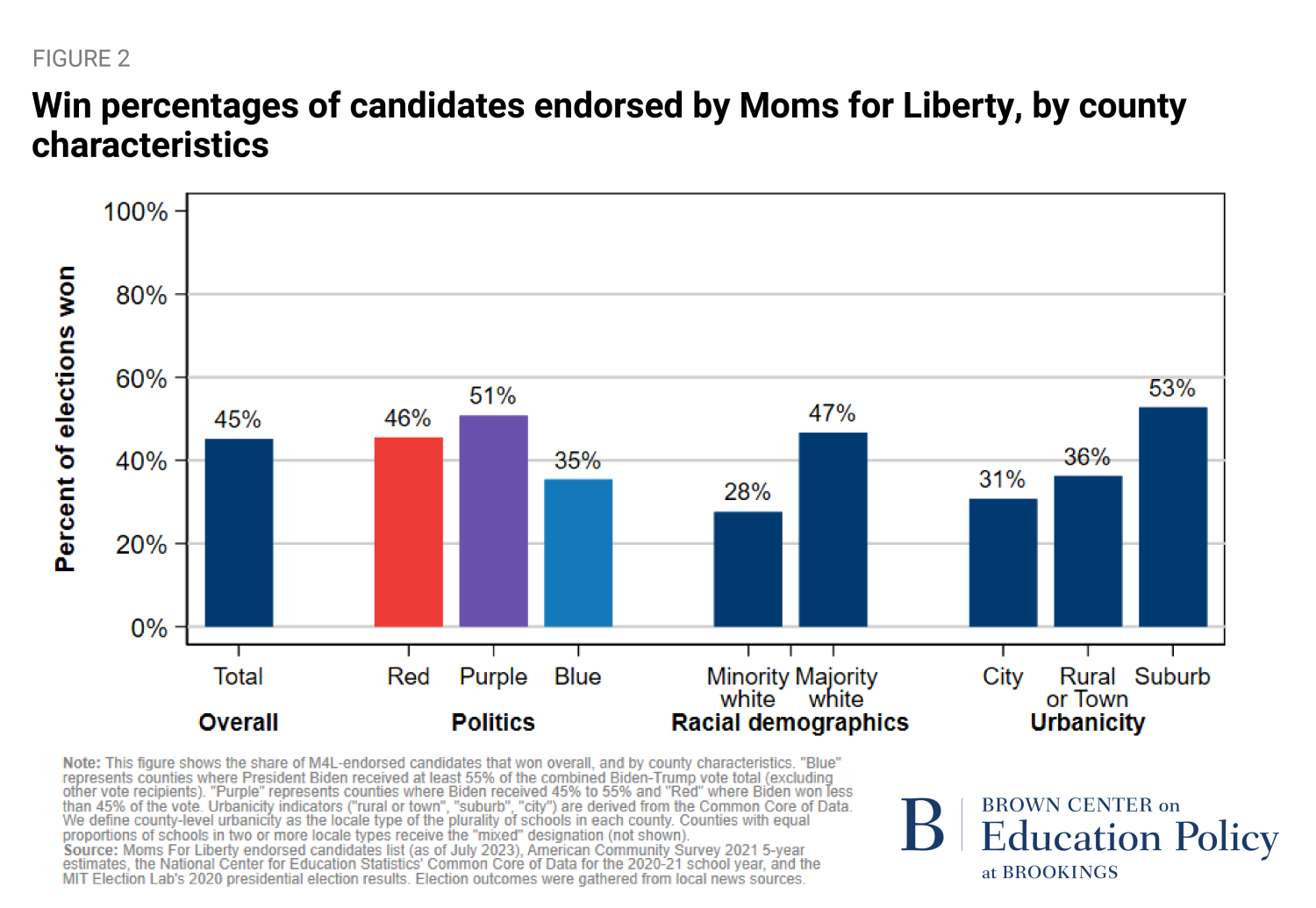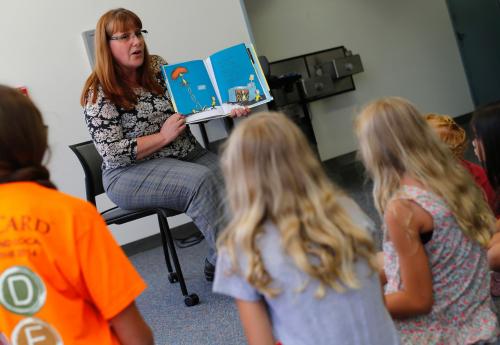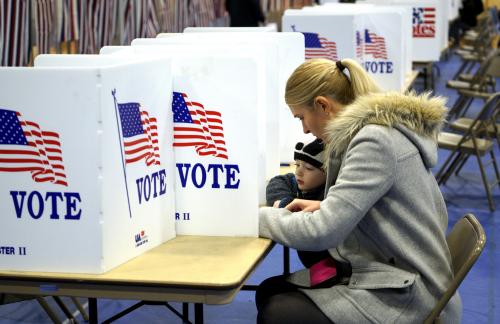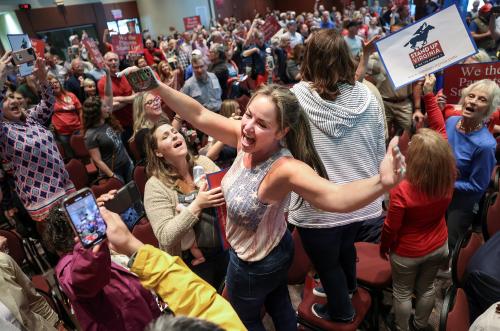Moms for Liberty (M4L), a conservative “parents’ rights” organization, has emerged as a visible player in U.S. education politics. Since its founding in 2021, M4L has engaged in local school board politics and elections across the country. Along the way, M4L has attracted plenty of headlines. Most jarringly, an Indiana chapter of M4L was in the news after featuring an Adolf Hitler quote in its newsletter this past June. Despite the resulting negative press, Republican presidential candidates spoke at a national M4L conference just few a days later.
M4L’s quick rise to prominence within the Republican Party has raised questions about how much influence it might have in American politics. Yet, despite the outsized attention the group has garnered in the media, we know little about M4L outside of what its founders have said in public statements and interviews.
To get a better sense of the scale and geography of Moms for Liberty, we collected data on where: 1) M4L chapters are located; 2) M4L has endorsed school board candidates; and 3) M4L-endorsed candidates have won/lost their elections. We find that the geography of Moms for Liberty is complex. While a disproportionately large share of M4L’s members and endorsements are in politically “blue” and “purple” areas (especially suburbs), M4L-endorsed candidates win at higher rates in more conservative parts of the country. And while M4L’s membership has grown quickly in its first three years, its membership pales in comparison to that of the true behemoths in education politics: the teachers’ unions.
Where are Moms for Liberty’s members?
Moms for Liberty is a national organization that oversees dozens of semi-autonomous county chapters. To understand the types of communities where these chapters operate, we collected a list of local M4L chapters from the national M4L Facebook page. We used the number of members in these local chapters’ Facebook groups to obtain county-level estimates of the organization’s membership. Overall, this amounts to about 103,000 members across 278 chapters in 45 states. These numbers are similar to those reported by M4L in May 2023 (115,000 members across 285 chapters in 45 states).
Some have described a looming “clash” between Moms for Liberty and the teachers’ unions. At least with respect to membership numbers, though, the two are not comparable. The country’s two largest teachers’ unions, the National Education Association (NEA) and American Federation of Teachers (AFT), represent almost 5 million members between them. M4L’s numbers are instead more comparable to, say, the Massachusetts Teacher Association, which represents 117,000 members.
Figure 1 shows where M4L chapters are located, with circle sizes scaled to reflect chapter membership size. By merging our M4L data with county-level 2020 election data from the MIT Election Lab, we can see the types of places, politically, where these chapters operate. Blue circles represent counties where President Biden received at least 55% of the combined Biden-Trump vote total (excluding other vote recipients). Purple circles represent counties where Biden received 45% to 55%. Red circles are where Biden won less than 45% of that combined vote.
While M4L’s politics might lean far to the right, its chapters have arisen in diverse political contexts. Clusters of chapters appear in Florida, the Northeast (from DC to New York), and the Carolinas. Florida, where the organization has its roots and close ties with the DeSantis administration and Florida Republican Party, has the most chapters of any state (28). New York (13,724), Florida (12,465), and Pennsylvania (10,254) have the most members. Interestingly, M4L has only a modest presence in other Republican strongholds in the South, Plains, and Appalachia. Texas, for example, has only a few chapters, and they are mostly in politically moderate or progressive counties.
We can look more closely at the types of places where M4L has chapters by incorporating data from the American Community Survey and Common Core of Data. We focus on local politics, urbanicity, community racial demographics, and rates of demographic change. Table 1 shows where M4L is (and is not) located.
The unweighted columns have the simplest interpretation. They show that almost half of all M4L chapters are in politically conservative “red” counties (45%), with a similar plurality in suburban counties (42%). Most M4L chapters (84%) are in majority-white counties, and most (60%) are in counties that saw at least a five percentage-point decline in their white population between 2011 and 2021.
However, these unweighted estimates can be misleading. A disproportionate share of U.S. counties are lightly populated areas that lean Republican. A better approach could be to weight counties by their population. With these weights, a large county—like Los Angeles County—receives more weight than a low-population county.
Here, the interpretation of results is a little different. The third column in Table 1 shows that most Americans who live in a county with an M4L chapter are in “blue” counties (54%) or “purple” counties (30%). Meanwhile, only 17% of Americans who live in a county with an M4L chapter are in Republican-leaning areas. Most Americans who live in a county with an M4L presence are in suburban areas (56%), with a small share (7%) in rural areas. A disproportionate share are in areas where the white population has been declining—a finding consistent with other work indicating that far-right politics resonate most in places that have experienced the most significant declines in the non-Hispanic white population in recent years.
Determining the causal relationships between these local characteristics and M4L’s presence is beyond the scope of this post (e.g., examining whether demographic changes create the conditions for M4L to start). However, out of curiosity, we ran regression models that use county characteristics to predict whether a county has an M4L chapter.1 The results support the idea that M4L chapters are disproportionately popping up in suburban areas, even controlling for political and demographic characteristics.
Where does Moms for Liberty endorse candidates?
The core of M4L’s work has been its advocacy in local school board politics. This includes endorsing ideologically aligned candidates in hopes of “flipping” boards to be controlled by more politically conservative members. Therefore, our next question is where M4L is most engaged in school board elections.
We obtained a list of M4L endorsements from the national organization’s website. This netted 340 candidates from the 2022 election cycle and another 32 from 2023, amounting to 372 total candidates across 88 counties. (Moms for Liberty has reported that it endorsed over 500 candidates in 2022. We reached out to M4L for a complete list of endorsed candidates—in hopes of understanding this discrepancy—but did not receive a response.)
While the location of M4L chapters gives a sense of where M4L operates, only 26% of counties with M4L chapters had an endorsement listed on the M4L endorsements page. Thus, it’s worth checking if the types of counties with M4L endorsements reflect similar patterns to the types of counties with M4L chapters. And for the most part, they do. Most Americans living in a county where M4L recently endorsed school board candidates live in suburban areas (53%), and most live in blue (54%) or purple (19%) counties.
Where do school board candidates endorsed by Moms for Liberty win?
Maybe it isn’t surprising that Moms for Liberty has a strong presence in politically blue and purple counties. On its website, M4L suggests that it’s looking to serve those who don’t feel well represented by their local leaders: “Are you tired of feeling like you are alone in your concerns for the future of your children? Do you try to speak to community leaders about your concerns and your voice goes unheard?”
Of course, being present in these areas doesn’t necessarily mean that M4L is having success in these areas. At this point, we really don’t know what an M4L endorsement is worth. Financial contributions from M4L could be influential since school board races tend to be lightly funded. However, M4L’s financials remain murky, and there have been reports of complaints from chapter leaders about a lack of funding from the national organization.
Financial contributions aside, an endorsement could have impact if it results in voters paying more attention to M4L-endorsed candidates. School board elections tend to be low-information races in which relatively few people vote. This creates potential for flipping seats, or entire boards, by getting out the vote. Maybe M4L does that by elevating the profile of local school board races among conservatives. On the other hand, M4L could have the opposite effect, especially in more progressive areas. It could elevate the profile of local school board races in ways that turn out votes opposed to its preferred candidates.
With the data available to us, we cannot precisely identify the causal effect of an M4L school board endorsement. We can, however, get a sense of how M4L-endorsed candidates fare in various types of counties.
Using data from local government and news sources, we checked the outcome of each race in which Moms for Liberty endorsed at least one candidate. Overall, 45% of M4L-endorsed candidates in our sample won. Their win rates varied across different types of counties (Figure 2).
School board candidates endorsed by Moms for Liberty won seats at higher rates in politically purple (51%) and red (46%) counties than blue counties (35%). They also won more often in majority-white counties (47%) than minority-white counties (28%), and in suburbs (53%) more than other locales. So, while M4L might have a disproportionate presence in politically progressive and moderate counties, they appear to win at higher rates in red areas relative to blue areas.
So, overall, does Moms for Liberty seem to be helping candidates with its endorsements? It’s hard to say. Typically, we’d expect organizations like M4L to endorse candidates that they’d expect to win anyway to give an impression of significant impact. The fact that M4L endorsed a lot of candidates in politically unfriendly areas suggests that it may not be quite so risk averse. The causal impact of an M4L endorsement is sure to be a topic of future research (à la research on teachers’ union endorsements).
The road ahead
It isn’t often that a new player emerges in the education politics landscape that is being referenced as a potential counterweight to teachers’ unions.
If we measure impact by the noise and controversy an organization stirs up, then M4L’s effect on U.S. education politics is unmistakable. Arguably, no organization has had such a visible presence in local education politics in recent years.
However, whether Moms for Liberty succeeds in transforming school board politics and changing policies remains to be seen. On one hand, engaging at the local level means that even modest outreach can affect elections, and, in turn, governance. Further, even if they are not successful at changing electoral outcomes, they may be effective at placing conservative policies on the agenda through their activity at school board meetings, potentially increasing book bans, curriculum restrictions, and more. On the other hand, Moms for Liberty is such a polarizing organization, with such an extreme set of positions, that its long-term impact remains uncertain.
-
Acknowledgements and disclosures
The authors thank Ariell Bertrand for helpful feedback on this post.
-
Footnotes
- We regress an indicator variable for whether a county has an active M4L chapter on several county-level characteristics, including indicators for 2020 presidential vote share, log of population size, indicators for urbanicity, racial/ethnic demographics, percent population change between 2011 and 2021, percent white population change between 2011 and 2021, median household income, and share of residents with a bachelor’s degree or higher.
The Brookings Institution is committed to quality, independence, and impact.
We are supported by a diverse array of funders. In line with our values and policies, each Brookings publication represents the sole views of its author(s).




